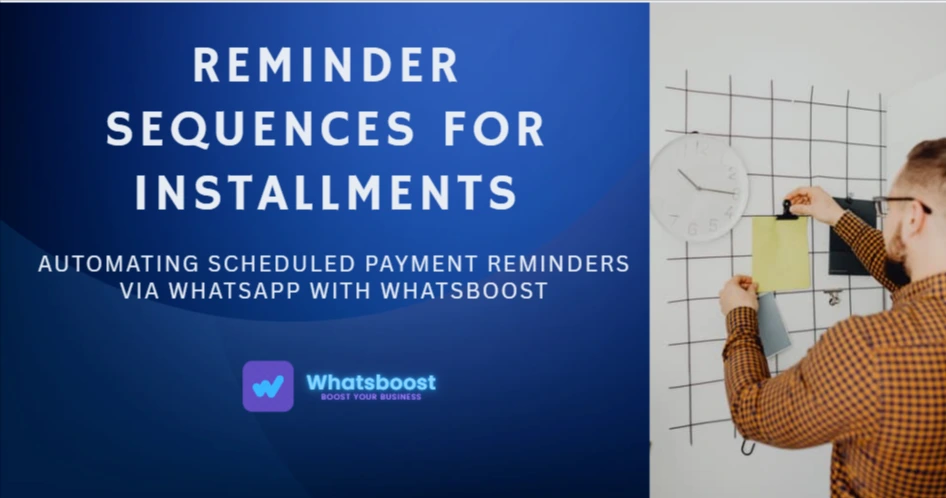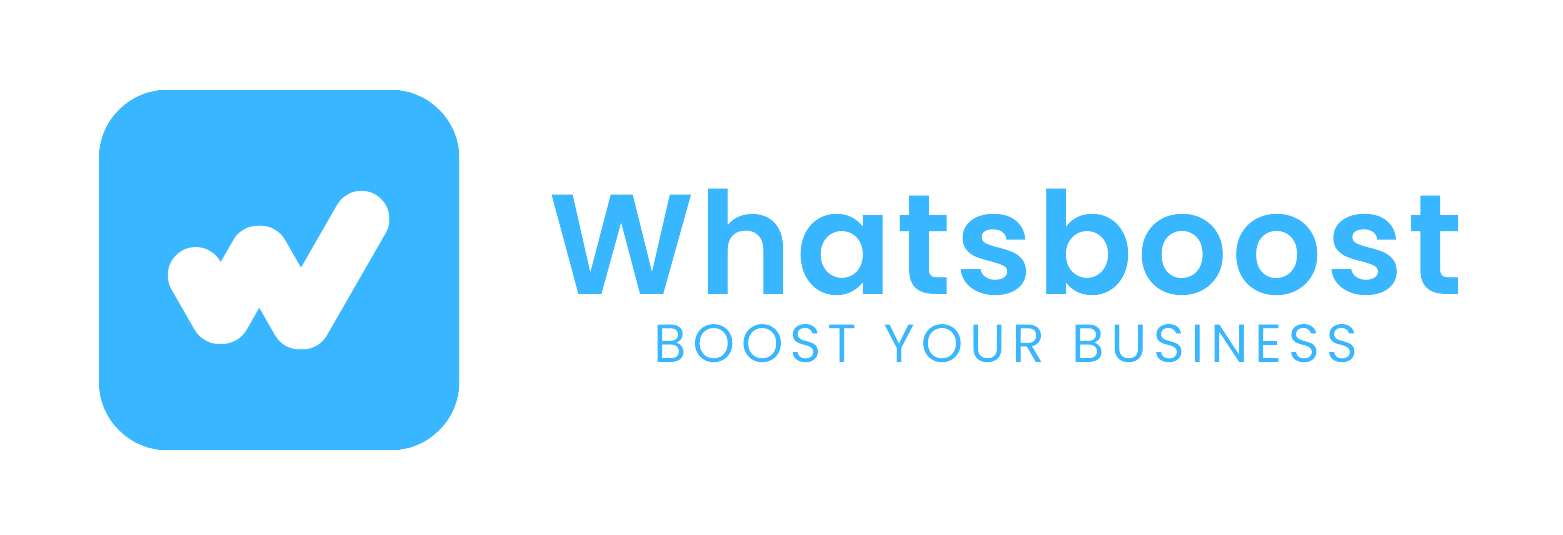
Reminder Sequences for Installments: Automating Scheduled Payment Reminders via WhatsApp with WhatsBoost
Learn how small businesses and service providers can automate installment and fee reminders using Google Sheets and WhatsApp—without relying on Meta’s API. This guide explains how WhatsBoost enables scheduled, personalized messaging to improve payment consistency and reduce manual follow-ups.
For small businesses, educators, consultants, and service providers, managing installment payments—whether EMIs, tuition fees, or service retainers—is a recurring challenge. Clients forget due dates, manual follow-ups eat into productive hours, and missed payments disrupt cash flow.
While traditional reminders via email or SMS often go unnoticed, WhatsApp has emerged as a more immediate and effective channel. With open rates exceeding 90%, WhatsApp messages are read quickly and acted upon faster than other formats. But how do you automate these reminders without relying on Meta’s official API or hiring a developer?
This article explores how WhatsBoost Connectors—a browser-based automation tool—can be used to create scheduled WhatsApp installment reminders using Google Sheets. We’ll walk through the logic, setup, and use cases, offering practical insights for small teams and solo professionals.
💡 Why Automate Installment Reminders?
Whether you’re collecting monthly fees, course payments, or service retainers, automation helps you:
- Reduce manual follow-ups: No more chasing clients one by one.
- Improve payment consistency: Timely reminders lead to fewer delays.
- Maintain professionalism: Automated messages feel structured and reliable.
- Free up time: Focus on service delivery instead of admin tasks.
For small businesses, where every hour and rupee counts, automating reminders is not just efficient—it’s strategic.
🔗 Tools You’ll Need: Google Sheets + WhatsBoost
To build a reminder sequence, you’ll need:
1. Google Sheets
This acts as your payment tracker. You can log:
- Client name
- Contact number
- Installment amount
- Due date
- Payment status
- Notes or custom messages
Google Sheets is flexible, cloud-based, and easy to update—ideal for small teams.
2. WhatsBoost Connectors
WhatsBoost integrates with WhatsApp Web and allows you to send automated messages based on triggers from Google Sheets. It doesn’t require Meta’s API, coding, or server hosting. You can schedule messages, personalize content, and route them to the right contacts—all from your browser.
⚙️ How It Works: Technical Logic Behind Reminder Sequences
Let’s break down the workflow in simple terms:
Step 1: Structure Your Sheet
Create a spreadsheet with columns like:
- Name
- Phone Number
- Installment Amount
- Due Date
- Reminder Status (Pending/Sent)
- Custom Message (optional)
You can use formulas to calculate days remaining or flag overdue payments.
Step 2: Set Up Triggers
WhatsBoost can be configured to check your sheet daily and send messages based on:
- Due date proximity (e.g., 3 days before)
- Payment status (e.g., still pending)
- Specific time of day (e.g., 10:00 AM)
Step 3: Compose Message Templates
Use dynamic fields from your sheet to personalize messages. For example:
👋 Hi [Name], this is a reminder that your installment of ₹[Amount] is due on [Due Date]. Kindly ensure payment to avoid late fees. Let us know if you need assistance.
You can also include payment links, account details, or contact info.
Step 4: Automate the Sequence
Once configured, WhatsBoost will:
- Scan your sheet daily
- Identify rows that match the trigger conditions
- Send WhatsApp messages to the listed numbers
- Update the “Reminder Status” column to track sent messages
This creates a loop of scheduled, trackable communication—without manual effort.
🧠 Use Cases Across Industries
Here’s how different professionals can apply this setup:
🎓 Educators & Tutors
Track student fee installments and send reminders before due dates. Include session schedules or payment links for convenience.
🛠️ Service Providers
For monthly retainers or milestone payments, automate reminders to clients with personalized notes and invoice references.
📈 Consultants & Freelancers
Manage recurring payments from clients and send structured reminders with payment summaries and deadlines.
🏥 Clinics & Wellness Centers
Send reminders for therapy sessions, health packages, or EMI-based treatments—ensuring timely payments and better client retention.
🧪 Best Practices for Effective Reminder Sequences
To ensure your reminders are helpful (not annoying), follow these tips:
1. Segment Your Audience
Not all clients need the same tone or frequency. Use WhatsBoost’s routing logic to tailor messages based on client type or payment history.
2. Use Clear, Respectful Language
Avoid aggressive or overly formal phrasing. Keep messages friendly, informative, and solution-oriented.
3. Include Payment Options
Make it easy to act. Include UPI links, bank details, or buttons to confirm payment.
4. Track Responses
Use WhatsBoost’s webhook integration to log replies or payment confirmations in your CRM or Google Sheet.
5. Avoid Over-Messaging
Limit reminders to 1–2 per installment cycle. Too many messages can lead to opt-outs or muted chats.
⚖️ Comparing WhatsApp Reminder Methods
| Method | Pros | Cons |
|---|---|---|
| Email Reminders | Formal, detailed | Often ignored, slower response |
| SMS Reminders | Wide reach | Limited formatting, lower engagement |
| WhatsApp via WhatsBoost | Instant, personalized, automated | Requires WhatsApp Web session |
| Manual WhatsApp Messages | Flexible, personal | Time-consuming, error-prone |
For small businesses, WhatsApp reminders via WhatsBoost strike the right balance between automation and personalization.
🔐 Compliance and Privacy Considerations
Even without using Meta’s API, it’s important to follow ethical practices:
- Get consent: Only message clients who’ve opted in or initiated contact.
- Avoid spam: Don’t send bulk messages without relevance.
- Secure data: Keep your Google Sheet access restricted and encrypted if possible.
- Respect boundaries: Allow clients to opt out or reschedule reminders.
WhatsBoost operates locally through your browser, which means your data isn’t stored on external servers—adding a layer of privacy control.
🧭 Final Thoughts: Making Installment Management Smarter
Managing installment payments doesn’t have to be a manual, stressful process. With tools like Google Sheets and WhatsBoost, small businesses can build structured, automated reminder sequences that improve cash flow, reduce admin work, and enhance client relationships.
This approach is scalable, affordable, and doesn’t require technical expertise. Whether you’re a solo educator, a growing agency, or a wellness provider, WhatsApp-based reminders can help you stay organized and professional—without the overhead of traditional systems.
